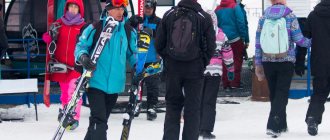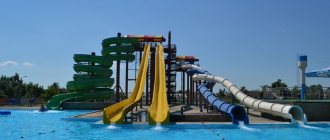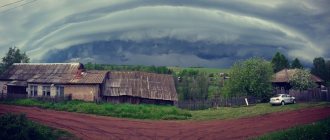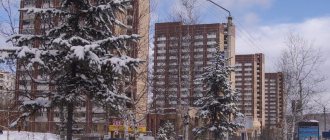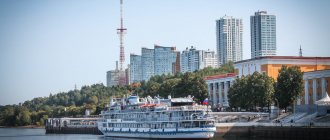It’s unlikely that anyone has heard of the large Russian island of Karafuto. In fact, everyone knows him. This is how the Japanese called the island of Sakhalin in their own way. Its capital is Yuzhno-Sakhalinsk. In the century before last, the best advertisement for the city was made by Chekhov, who toured the island and wrote a whole book about it. These places are worth seeing with your own eyes.
Yuzhno-Sakhalinsk
General information
This Russian city is located in the southeast of Sakhalin Island, on the Susuya River, and is the sixth largest settlement in the Far East. The Sea of Okhotsk is 25 km from it, and it is separated from the capital of the Russian Federation by 9,420 km.
The area of Yuzhno-Sakhalinsk is approximately 165 thousand square kilometers. Thanks to its moderate monsoon climate, this city is often called Russian Australia. This settlement connects a number of highways of regional importance. In addition, there is an airport and a railway station in the capital of the Sakhalin District.
All residential buildings in this city are built using specially developed technology, so they can withstand strong earthquakes up to magnitude eight. The authorities had to resort to such a measure, since this settlement is located in a seismic zone.
Monuments
- Memorial sign in honor of the founding of the village of Vladimirovka
- Bust-Monument to V. M. Golovnin
- Sculptural group dedicated to Sakhalin border guards
- Monument to A. S. Pushkin
- Memorial sign in honor of the 300th anniversary of the discovery of the Kuril Islands
- Memorial sign dedicated to Sakhalin policemen who died in Chechnya
- Memorial to Soviet soldiers who died in the battles for the liberation of South Sakhalin and the Kuril Islands in 1945.
- Tank T-34-85, dedicated to the victory of Soviet troops in the Great Patriotic War
- Memorial in honor of Sakhalin soldiers who died in Afghanistan and Chechnya
- Memorial to those killed in the MI-8 helicopter crash on August 20, 2003
- Memorial in honor of the liberation of South Sakhalin and the Kuril Islands
- Monument to P. A. Leonov
- Russian 11-inch gun model 1867
- Monument to A.P. Chekhov
- Monument to G. I. Nevelsky
- Monument to I. F. Krusenstern
- Monument to Andrew the First-Called
- Monument to V.I. Lenin
- Monument to Yu. A. Gagarin
- Memorial to the victims of the earthquake in Neftegorsk on May 28, 1995
- Monument to Marshal Alexander Vasilevsky
- Monument to the heroes of the film “White Sun of the Desert” - Vereshchagin and Petrukha (2019)
- Monument to Lenin and memorial to those killed in Neftegorsk
- Japanese steam locomotive D-51 1948
Settlement history
When the city of Yuzhno-Sakhalinsk was founded in 1882, its population was then only 56 people, and it was called the settlement of Vladimirovka. Over the next ten years the numbers did not change significantly, and they were mainly Russian exiles.
At the beginning of 1905, a Japanese settlement was formed on this territory, which led to a radical change in the number of residents in the city, and their national composition also changed. After the end of World War II, all Japanese were deported to their homeland, and their place was taken by settlers from other regions of the Soviet Union.
The latest censuses that took place in this city showed that the population of Yuzhno-Sakhalinsk has grown significantly when compared with other periods, and, moreover, its decline in the suburbs and villages has significantly decreased. This happens for the reasons that this settlement is attractive to people due to the fact that it is a regional center, and mild climatic conditions prevail on its territory. In addition, it has an advantageous geographical position and recently there has been an increased development of its economy and many industries.
Japanese heritage
Yuzhno-Sakhalinsk cannot boast of outstanding architectural masterpieces. Since it was originally built with wooden houses, severe fires often occurred. For this reason, no old buildings have been preserved in the city. The legacy of the Japanese occupation was a system of clear rectangular buildings. All streets ran either parallel or perpendicular to the railway. There was no greenery at all in the city center. Only on the outskirts did the Japanese create a small park with a pond.
Vladimirovka in the 1880s
Traditionally, the Japanese built very densely. Single-story frame shacks huddled together. They did not have yards or outbuildings. The internal plywood walls of the houses were often sliding, and the floors were earthen. The dwellings were heated by portable iron stoves, from which ceramic pipes were routed along the outer walls. Alas, typical Japanese residential buildings have not survived to this day.
Toyohara in the 1930s
This period is evidenced only by documents and photographs in the Sakhalin Regional Museum of Local Lore. It is interesting because it occupies a former Japanese building, built in the traditional “teikan-zukuri” style. This style appeared in Japan in the Middle Ages, and then became popular again at the beginning of the 20th century. There are no other buildings like this in Russia. The museum's exposition gives a complete picture not only of the history of the development of Sakhalin, but also of the flora and fauna of the island. Recently, another exhibit was a Japanese tank from the Second World War.
Number of inhabitants currently
So, how much is the population in Yuzhno-Sakhalinsk for this period? In this city, as of January 1, 2016, 199,770 residents were registered, which is the third part of the entire Sakhalin region. Moreover, only five percent of them are rural residents, and the rest are city dwellers, so the city’s population density is approximately 220 people per square kilometer.
The average age of Sakhalin residents is 36 years. About ten percent more women live in this locality than men.
Transport
Railway
The first railway appeared in the city in 1906, it connected the settlements of Toyohara and Otomari. By 1945, the city of Toyohara was connected by railways with almost all major settlements in Southern Sakhalin. After the transition of the Sakhalin Railway to the control of the USSR, passenger traffic began to develop intensively, motor railcars, diesel trains, and new cars were purchased. In 1980, a new station building was built, thereby making waiting for the train more comfortable. The 1990s had a very difficult impact on the work of railway transport. In 1993, traffic to Aniva was stopped, and a year later the Yuzhno-Sakhalinsk - Kholmsk line was closed, after which the travel time to Kholmsk increased from 3 to 7 hours, and communication with Uglegorsk was also stopped. In 1998, communication with Sinegorsk and Korsakov was stopped. In 2006, the Okha-Nogliki narrow-gauge road was closed and the tracks were dismantled. Currently, passenger traffic is carried out in the following directions:
- Yuzhno-Sakhalinsk - Nogliki (long-distance);
- Yuzhno-Sakhalinsk - Tomari (suburban since July 1, 2013);
- Yuzhno-Sakhalinsk - Poronaysk;
- Yuzhno-Sakhalinsk - Korsakov.
Freight traffic is carried out along all lines of the Sakhalin region of the Far Eastern Railway, from the Yuzhno-Sakhalinsk-Gruzovoy station
In August 2022, the railway on Sakhalin was transferred to the all-Russian gauge standard.
Air
Yuzhno-Sakhalinsk is connected to Russian cities by air. Yuzhno-Sakhalinsk Airport, which serves the region, is an international airport, as it is connected by flights not only to all of Russia, but also to cities in the Asia-Pacific region. Flights are operated to Moscow, Novosibirsk, Vladivostok, Khabarovsk, Blagoveshchensk, Petropavlovsk-Kamchatsky and Komsomolsk-on-Amur. To foreign cities: Tokyo, Seoul, Sapporo, Beijing, Shanghai, Harbin, Phuket. Flights within the region are carried out to Yuzhno-Kurilsk (Kunashir Island), Kurilsk (Iturup Island, Iturup Airport), Okha, Shakhtersk, Nogliki.
Helicopter service connects Yuzhno-Sakhalinsk with Iturup, Kunashir and Shikotan.
At the moment, the Yuzhno-Sakhalinsk Airport is being expanded, as a result of which its capacity will increase many times over.
Public road transport
The city is also the center of highways such as A-391 (goes south to Korsakov) and A-392 (goes west to Kholmsk)
- Municipal bus routes
- Intermunicipal communication of the Sakhalin region
Current demographic situation
The population of Yuzhno-Sakhalinsk is constantly growing. Therefore, in recent years, exclusively positive dynamics have been observed, both in migration processes and in the natural increase in the number of residents. Thus, at the moment, in the reports of social workers, one can see that the birth rate far exceeds the death rate in this city.
This trend is certainly facilitated by the fact that this year there were 1.4 times more marriages than divorces registered. Only 57,000 people of retirement age live in the territory of the regional center, of which 53% are employed.
Population
| Population | ||||||
| 1959[8] | 1970[9] | 1979[10] | 1989[11] | 2002[12] | 2009[13] | 2010[14] |
| 85 510 | ↗113 380 | ↗148 468 | ↗169 663 | ↗182 576 | ↘182 239 | ↗189 010 |
| 2011[15] | 2012[16] | 2013[17] | 2014[18] | 2015[19] | 2016[20] | 2017[21] |
| ↘188 907 | ↗193 235 | ↗196 973 | ↗199 488 | ↗199 767 | ↗200 739 | ↗201 985 |
| 2018[22] | 2019[23] | 2020[24] | 2021[2] | |||
| ↗206 140 | ↗208 000 | ↘207 708 | ↘207 284 | |||
National composition of the city
Mostly Russians populate Yuzhno-Sakhalinsk. The population of this city, however, consists of many nationalities. The regional center is home to a fairly large Korean diaspora and makes up approximately 9% of the total number of citizens. This nationality has remained here since the times when there was a Japanese settlement in the city. At the moment, Yuzhno-Sakhalinsk can be considered the cultural center of Koreans.
In addition to these nationalities, approximately 4% of Ukrainians, 1.55% of Tatars and 1% of Belarusians live in the city.
Natives
- Setsuo Fukutomi (1919-2017) - mathematician, professor at Tokyo Agricultural University, public figure and anti-war activist.
- Masami Fukushima (1929–1976) - editor, science fiction writer, critic and translator. As the creator and first editor-in-chief of Japan's first successful science fiction fanzine, SF Magazine, he helped popularize science fiction in Japan and became known as the "Demon of SF".
- Toshio Kaneko (1929-2006) - newspaper reporter. After retirement, in 1972 he published the book “Summer 1945 on Karafuto” at the Kodansha Publishing House. Notes on the end of the Second World War on Karafuto" based on which the 1974 film "Summer of 1945 on Karafuto. Gates of ice and snow."
- Ryu Ota (1930–2009) - political activist, new left extremist, writer and environmentalist.
- Masahide Nikoshi (1936—) - Businessman. Owner of the HOKUBU Memorial Art Gallery in Sapporo.
- Akio Kanai (1942—) - Chairman and President of FUJIMEGANE CO., LTD, the first Japanese recipient of the Nansen Prize in 2006. In 2009 he was awarded the Medal of Honor with a green ribbon. One of two recipients of the 2012 Shibusawa Eiichi Prize.
Education and culture
The young population of Yuzhno-Sakhalinsk can obtain a future profession in eight different universities located in the city. More than 8,000 students are currently studying there. Young residents of the regional center receive their knowledge in thirty secondary schools or two evening educational institutions.
Also in this locality there are quite a lot of interesting places and attractions that attract a large number of tourists from other countries to admire the main cultural institutions of the region concentrated there. Among them are the following: Museum of Local Lore, International Theater Center named after A.P. Chekhov, puppet theater and others. In addition, the city has a wonderful park of culture and recreation, where locals and visitors love to spend their leisure time. Near this place there is also a zoo, some interesting monuments dedicated to the heroes of past years.
Also, the population of the city of Yuzhno-Sakhalinsk for their education visits 23 libraries and seven cultural centers located in this regional center. Sports clubs and children's and youth schools are popular among younger residents, with more than two thousand people currently enrolled.
Map
| Yuzhno-Sakhalinsk: maps |
Yuzhno-Sakhalinsk: photo from space (Google Maps) Yuzhno-Sakhalinsk: photo from space (Microsoft Virtual Earth)
| Yuzhno-Sakhalinsk. Nearest cities. Distances in km. on the map (in brackets along roads) + direction. Using the hyperlink in the distance , you can get the route (information courtesy of the AutoTransInfo website) | |||
| 1 | Aniva | 30 () | SW |
| 2 | Korsakov | 35 (42) | YU |
| 3 | Dolinsk | 41 (44) | WITH |
| 4 | Kholmsk | 53 (81) | Z |
| 5 | Nevelsk | 73 (83) | SW |
| 6 | Chekhov | 78 () | NW |
| 7 | Gornozavodsk | 80 () | SW |
| 8 | Tomari | 103 () | NW |
| 9 | Krasnogorsk | 170 (248) | WITH |
| 10 | Makarov | 185 (216) | WITH |
| 11 | Uglegorsk | 241 (318) | WITH |
| 12 | Shakhtersk | 249 () | WITH |
| 13 | Poronaysk | 253 (290) | WITH |
| 14 | Sovetskaya Gavan | 289 (387) | NW |
a brief description of
Located in the southeastern part of Sakhalin Island, on the river. Susuya, 10,417 km east of Moscow. Railway junction lines and highways.
The climate is temperate monsoon. The average temperature in January is -6, in August +19. Precipitation is about 800 mm per year.
Territory (sq. km): 905
Information about the city of Yuzhno-Sakhalinsk on the Russian Wikipedia site
Historical sketch
Founded in 1882 as the village of Vladimirovka. The name comes from the personal name Vladimir, which belonged to the local hard labor manager.
In 1905, according to the Portsmouth Peace Treaty (1905), which ended the Russian-Japanese War of 1904-05, the southern part of Sakhalin Island (up to the 50th parallel) the village ceded to Japan. The settlement became a city, the administrative center of Southern Sakhalin and was called Toyohara (Toyohara).
In 1945 it was returned to Russia. Liberated on August 25, 1945 by troops of the 2nd Far Eastern Front during the Yuzhno-Sakhalin operation.
The city of Yuzhno-Sakhalinsk since 1946; named after its location in the south of the island.
In 1995, the villages of Novoaleksandrovsk (formerly a village, PGT from 1989 to 1995, 4.4 thousand inhabitants, 1959; 8.0 thousand inhabitants, 1979) and Lugovoye (PGT from 1989 to 1995) were transferred from the Aniva district and included within the city of Yuzhno-Sakhalinsk.
Municipal indicators
| Index | 1990 | 1999 | 2001 | 2003 | 2005 |
| Demography | |||||
| Number of births, per 1000 population | 14.1 | 8.7 | 9.6 | 10.6 | 11.1 |
| Number of deaths, per 1000 population | 7.7 | 10.7 | 11.8 | 13.7 | 13.9 |
| Natural increase (decrease), per 1000 population | 6.4 | -2 | -2.2 | -3.1 | -2.8 |
| Standard of living of the population and social sphere | |||||
| Average monthly nominal accrued wages, rub. | 0.508 | 3373 | 5929.6 | 11750.5 | 18174.4 |
| Average housing area per inhabitant (at the end of the year), sq.m. | 15.4 | 17.5 | 18.7 | 18.8 | 19.3 |
| Number of preschool institutions, pcs. | 68 | 45 | 42 | 37 | 36 |
| Number of children in preschool institutions, thousand people | 12.7 | 6.8 | 6.8 | 6.7 | 6.9 |
| Enrollment of children in preschool educational institutions (at the end of the year), as a percentage of the number of children of the corresponding age, % | 74.9 | 79.1 | |||
| Number of daytime educational institutions (at the beginning of the school year), pcs. | 29 | 36 | 37 | 31 | 28 |
| Number of students in daytime educational institutions, thousand people | 24.6 | 27.5 | 25.6 | 22.2 | 18.4 |
| Number of doctors, people. | 1134 | 1260 | 1263 | 1340 | 1125 |
| Number of nursing staff, people. | 2264 | 2836 | 2723 | 2974 | 2635 |
| Number of hospital institutions, pcs. | 12 | 12 | 13 | 13 | 13 |
| Number of hospital beds, thousand units | 3.8 | 3 | 3.2 | 3.3 | 3.4 |
| Number of medical outpatient clinics, pcs. | 28 | 22 | 36 | 37 | 46 |
| Capacity of medical outpatient clinics, visits per shift, thousand units. | 3.8 | 4.3 | 5 | 5.1 | 7.4 |
| Number of registered crimes, pcs. | 3671 | 4693 | 4924 | 5194 | 6875 |
| Persons who committed crimes were identified, persons. | 1287 | 1764 | 1638 | 1076 | 1345 |
| Economy, industry | |||||
| Number of enterprises and organizations (at the end of the year), pcs. | 448 | 7461 | 6217 | 6342 | 7864 |
| Number of operating enterprises by type of activity: mining (at the end of the year), pcs. | 3 | ||||
| Number of operating enterprises by type of activity: manufacturing (at the end of the year), pcs. | 50 | ||||
| Number of operating enterprises by type of activity production and distribution of electricity, gas and water (at the end of the year), pcs. | 15 | ||||
| Volume of shipped goods of own production by type of mining (in actual prices), million rubles. | 675.1 | ||||
| Volume of shipped goods of own production by type of manufacturing (in actual prices), million rubles. | 2859.5 | ||||
| Volume of shipped goods of own production by type of production and distribution of electricity, gas and water (in actual current prices), million rubles. | 2956.5 | ||||
| Construction | |||||
| Volume of work performed by type of activity “Construction” (until 2004 - volume of work performed under construction contracts), million rubles. | 0.142 | 1506.5 | 3043.6 | 8635.9 | 10925.4 |
| Commissioning of residential buildings, thousand sq.m. of total area | 56.1 | 33.3 | 17.9 | 31.8 | 29.2 |
| Commissioning of residential buildings, apartments | 264 | 166 | 274 | 273 | |
| Commissioning of preschool institutions, places | 755 | 0 | 0 | 0 | 0 |
| Commissioning of educational institutions, places | 1176 | 0 | 0 | 0 | 0 |
| Commissioning of hospital facilities, beds | 90 | 0 | 54 | 0 | |
| Commissioning of outpatient clinics, visits per shift | 0 | 0 | |||
| Transport | |||||
| Number of bus routes (in intracity traffic), pcs. | 17 | 21 | 22 | 15 | |
| Number of passengers transported by buses per year (in intracity traffic), million people. | 72.7 | 2.3 | 4.3 | 3.8 | 2.6 |
| Connection | |||||
| Number of telephone sets of the city public telephone network, thousand units. | 33 | 45.2 | 59.7 | 67 | 73.3 |
| Number of residential telephone sets of the city public telephone network, thousand units. | 14.2 | 30.5 | 43.5 | 48 | 51 |
| Number of payphones of the city telephone network (including universal ones), pcs. | 337 | 321 | |||
| Trade and services to the population | |||||
| Retail trade turnover (in actual prices), million rubles. | 0.393 | 2887.5 | 6770.2 | 11200.6 | 17573 |
| Retail trade turnover (in actual prices), per capita, rub. | 2.286 | 15417 | 36233 | 64150 | 101290 |
| Index of physical volume of retail trade turnover, % compared to the previous year | 109.3 | 106.6 | |||
| Index of physical volume of public catering turnover, % compared to the previous year | 118.9 | 124 | |||
| Number of stores, pavilions (at the end of the year), pcs. | 37 | 33 | |||
| Sales area of shops, pavilions (at the end of the year), sq.m. | 4501 | 5686.7 | |||
| Volume of paid services to the population (in actual prices), million rubles. | 0.064 | 1069.9 | 2508.5 | 5416 | 10730.5 |
| Volume of paid services to the population (in actual prices), per capita, rub. | 0.4 | 5712 | 13429 | 30966 | 59272 |
| Volume of household services to the population (in actual prices), million rubles. | 0.019 | 117.2 | 168.9 | 497.1 | 1003.5 |
| Volume of household services to the population (in actual prices), per capita, rub. | 0.114 | 626 | 904 | 2842 | 5543 |
| Investments | |||||
| Investments in fixed assets (in actual prices), million rubles. | 0.158 | 6281.9 | 2023.9 | 5595.9 | 10733.3 |
| Share of investments in fixed assets financed from budgetary funds in the total volume of investments, % | 11.7 | 13.4 | 4.7 | 6.6 | |
Data sources:
- Regions of Russia. Main characteristics of the constituent entities of the Russian Federation: statistical collection. Goskomstat of Russia. - M:, 2003.
- Regions of Russia. Basic socio-economic indicators of cities. Statistical collection. Rosstat. - M:, 2005. p. 369
- Regions of Russia. Basic socio-economic indicators of cities. 2006. Statistical collection. Rosstat. - M:, 2006. p. 365
Culture, science, education
Sakhalin Institute of Marine Biology. Institute of Marine Geology and Geophysics of the Far Eastern Center of the Russian Academy of Sciences, Sakhalin Branch of the Pacific Research Institute of Fisheries and Oceanography.
Pedagogical Institute, branch of Moscow Commercial University, etc.
Theatres: Drama named after A.P. Chekhov, dolls.
Museums: local history, art.
Museums, galleries, exhibition halls
Literary and Art Museum of Books by A.P.
Chekhov "Sakhalin Island" 693020, Sakhalin region, Yuzhno-Sakhalinsk, st. Kurilskaya, 42 Phone(s): (4242) 43-6636 Website: https://chekhov-book-museum.ru/ Sakhalin Regional Museum of Local Lore 693010, Sakhalin Region, Yuzhno-Sakhalinsk, Kommunistichesky Ave. , no. 29 Phone(s): (4242) 50-6107 72-8799 Website: https://www.sakhalinmuseum.ru/
Sakhalin Regional Art Museum 693020, Sakhalin Region, Yuzhno-Sakhalinsk, st. Lenina, 137 Phone(s): (4242) 72-3643 Website: https://sakhartmuseum.ru/
Architecture, sights
Yuzhno-Sakhalinsk is located on the wide Susunayskaya valley at the foot of Rossiyskaya Mountain. Covered with multi-storey buildings. In the outskirts of the city, houses from the late 19th and early 20th centuries have been preserved.
| Population by year (thousands of inhabitants) | |||||||
| 1959 | 85.5 | 1986 | 163 | 2005 | 173.6 | 2014 | 192.7 |
| 1962 | 86 | 1989 | 159.3 | 2006 | 173.4 | 2015 | 192.8 |
| 1967 | 92 | 1992 | 164.8 | 2007 | 173.2 | 2016 | 193.7 |
| 1970 | 105.8 | 1996 | 181.0 | 2008 | 173.8 | 2017 | 194.9 |
| 1973 | 120 | 1998 | 180.0 | 2010 | 174.8 | 2018 | 199.0 |
| 1976 | 130 | 2000 | 179.2 | 2011 | 181.7 | 2019 | 200.9 |
| 1979 | 139.9 | 2001 | 179.2 | 2012 | 186.3 | 2020 | 200.6 |
| 1982 | 150 | 2003 | 175.1 | 2013 | 190.2 | 2021 | 200.2 |
Employment of citizens
The officially registered unemployed population of Yuzhno-Sakhalinsk is only 0.3% of the total number of residents or 275 people. At the same time, local organizations and firms require more than 18,000 workers.
As of February 1, 2016, 11,600 legal entities and 8,800 individual entrepreneurs were registered in this locality, which is more than 65% of the total number of all firms and companies in the Sakhalin region. That is why there is such a large increase in the migration of the working-age population to the regional center of the district.
How to get there
Currently, tourists mainly travel to Yuzhno-Sakhalinsk by air. The number of flights and the list of airports from which flights operate depend on the season. There are flights from Yekaterinburg, Novosibirsk, Khabarovsk, Vladivostok. Planes from Moscow fly to Sakhalin all year round. Travel time is about 8 hours. In winter, the airport on the island may be closed for some time due to weather conditions. Since the airport is located within the city, the easiest way to get to the center is by taxi.
Less commonly used is the ferry option from Vanino (Khabarovsk Territory) to Kholmsk (Sakhalin). In this case, the journey takes about 14 hours. You can buy a ticket without a cabin (seated seats) or take a place in a one-, two-, or eight-berth cabin. There are trains from Khabarovsk to the port of Vanino (the journey takes 25 hours). Buses run from the port of Kholmsk to Yuzhno-Sakhalinsk (93 km). Since the number of seats on the ferry is limited, tickets should be purchased in advance. This is especially true in the summer.
Income
In this locality, over the past decade, a constant increase in average wages has been recorded, thanks to which many young people come to work in Yuzhno-Sakhalinsk. The population of this city this year began to receive wages 10% more than last year, which is approximately 77,200 rubles.
The average monthly pension has also increased by approximately 2.1%, and now people of non-working age receive about 17,050 rubles. At the same time, the cost of the minimum food package this year is equal to 5,400 rubles, which is 120 rubles. more compared to the previous period.
Sport
- FC Avtomobilist (existed in 1993-1995).
- FC Sakhalin (founded in 2004).
- HC Sakhalin has been playing in the Asian Hockey League since 2014.
- VC "Elvari Sakhalin" plays in the 2011/2012 season in the Russian Championship in Major League B (in the East zone).
- SLHL Cup: Season 2005/2006 – hockey club “Zvezda”
- Season 2006/2007 - HC "Zvezda"
- Season 2007/2008 – HC “Sea Lions”
- Season 2008/2009 was not held
- Season 2009/2010 – HC “Sea Lions”
Industrial sectors
In economic development, this city is ahead of all settlements in the Sakhalin region. More than 32% of all industrial products are produced on its territory, about 27% of the total volume of contract work is carried out, and 100% of wholesale trade and 65% of retail trade are carried out.
Also, this settlement has become a center where companies working in the oil and gas industry cooperate with each other, since the energy resources of the area are currently being developed on its territory.
In addition, in Yuzhno-Sakhalinsk people still work in the food sector. This city produces many different types of cheeses, processed meats, mineral waters, confectionery, dairy products, beer, soft drinks and sausages. There is also a developed fishing industry here, represented by 130 enterprises.
In addition to domestic companies and firms, more than a hundred different companies with foreign capital also operate in this city.
Currently, the administration of the regional capital has begun to develop a strategic plan, which will spell out how Yuzhno-Sakhalinsk should develop until 2022. The population of this city, according to this document, will have the right to further participate in the selection of key decisions, as well as their successful implementation. Local authorities hope that the presence of such a strategy will make the mechanism for managing their settlement more open and transparent for Sakhalin residents and will ensure that the administration and members of the city community focus on promising areas of development of the regional center.
Outdoors
People also come to Yuzhno-Sakhalinsk to improve their health. The most famous health resort is the Sinegorsk Mineral Waters sanatorium. Healing water was discovered in these places at the beginning of the 20th century. Local residents were surprised by the water in the Sinegorka River, which had a characteristic sour taste. The first hospital was built here by the Japanese. Leaving the island, they disguised and concreted the source. It was only possible to rediscover it in the 60s.
The city has a Geological Museum
The peculiarity of the local water is that it has a high arsenic content. Don't be scared! In small doses this element is useful. It’s not for nothing that ancient healers said: “Everything is poison and everything is medicine. It's just a matter of quantity." Arsenic mineral waters are extremely rare in nature. In Yuzhno-Sakhalinsk, this natural medicine is used to treat diseases of the joints and lungs, as well as nervous disorders. An additional option to Sinegorsk mineral water can be the healing mud in the village of Goryachiye Klyuchi.
In order not to lead to illnesses, it is better to engage in their prevention. The sports and resort complex “Mountain Air” provides excellent opportunities for this. It is located just three kilometers from Yuzhno-Sakhalinsk. In winter, there are nine slopes, to which skiers are transported by a gondola-chair lift.
In the immediate vicinity of Yuzhno-Sakhalinsk there are many remarkable rocks
In summer it is worth taking a walk to the Yuzhno-Sakhalinsky mud volcano. It is located just two dozen kilometers northwest of the city. The best period to visit is from May to October. By jeep you can get almost to the volcano. The walk from the Novaya Derevnya railway station to the crater takes about two hours. The area of the mud field is six hectares. This is the largest mud volcano in Russia!
You can go skiing in Yuzhno-Sakhalinsk
It is also worth visiting the picturesque outlier “Frog”. It got its name from its characteristic shape, reminiscent of a sitting frog, ready to jump. An unusual natural formation is located near the village of Vestochka, two dozen kilometers from Yuzhno-Sakhalinsk. In addition to the rock, there is a river with a beautiful waterfall in which you can swim. Since the “Frog” is considered a “place of power,” the village even has an esoteric museum.
Mud volcano
A number of excursions have been developed for tourists coming to Yuzhno-Sakhalinsk. For example, there is an hour and a half trip by motor boat to a sea lion rookery in the Sea of Japan near the city of Nevelsk. There is an excursion to the cascade of Salyut waterfalls. Two waterfalls, 12 and 3 meters high, bubble near the former village of Svetlyaki. In the most picturesque place of the Nevelsky district there is a “Scandinavian trail” three kilometers long.
In the port of Korsakov, tourists are invited to get acquainted with the monastery, climb the Mountain of Tears, look at the monument to the First Hydrographers, and also take spectacular pictures from the observation deck. There is a walking route called “Cape Ostry”. It starts in the city of Dolinsk, passes through the cape, winds along the banks of small rivers and ends in the village of Lesnoye. In these places it is quite possible to meet a bear.
Tourists are offered an excursion to the sea lion rookery
Few people know that Sakhalin offers such a service as diving. Dive sites are located near small islands in the Sea of Japan. In particular, they are located 90 kilometers east of Yuzhno-Sakhalinsk near the village of Prigorodnoye and the city of Nevelsk. They offer diving in the company of sea lions. And near Moneron Island, thanks to the Tsushima Current, you can even admire the tropical underwater fauna.
The beauty of Sakhalin
And it’s really hard to believe (after all, it’s a region of the Far North!) that there is beach tourism on Sakhalin. Nevertheless, it is true. There are several places for recreation in the vicinity of Yuzhno-Sakhalinsk. The most famous are Aniva Beach and the beach in the village of Prigorodny on the shore of Aniva Bay. There are also beaches in Yablochny on the Sea of Japan and in the village of Okhotsk on the Sea of Okhotsk. There are about 40 hotels in Yuzhno-Sakhalinsk. It is impossible to stay here without a roof over your head.
